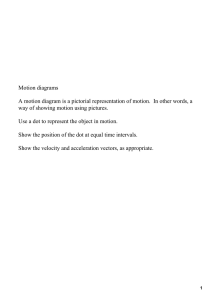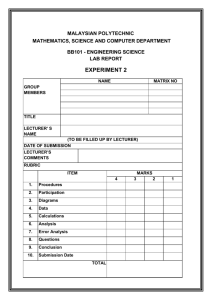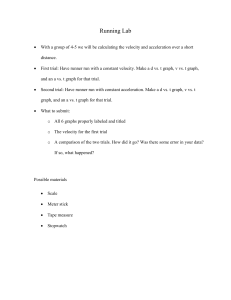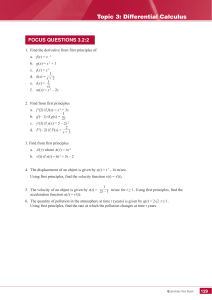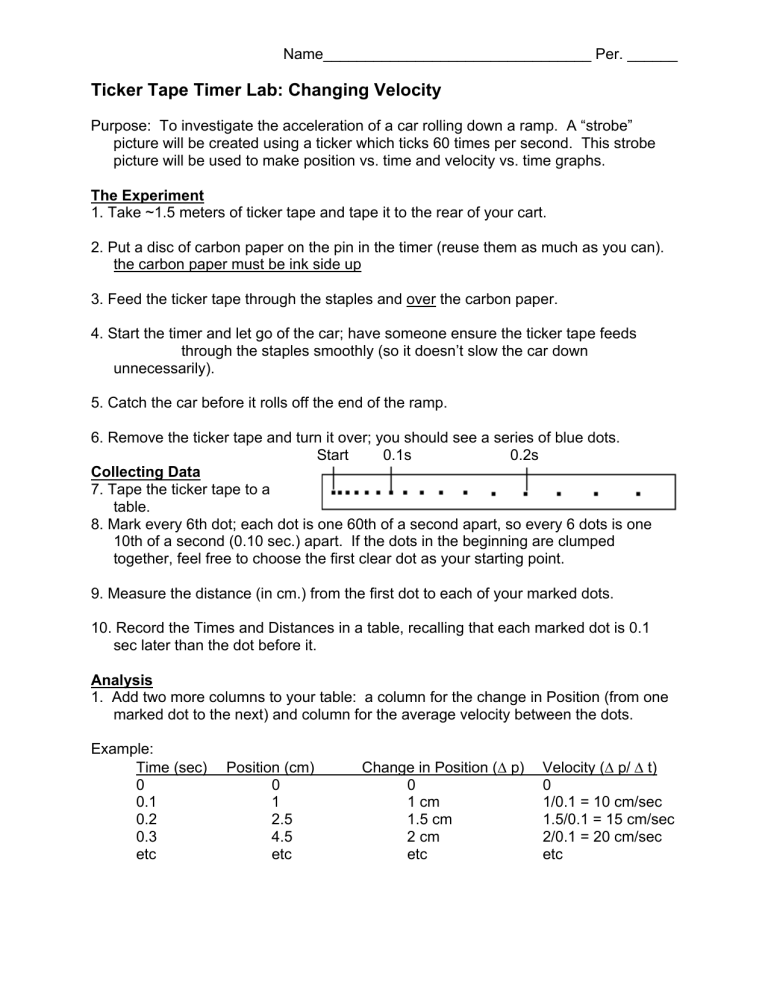
Name________________________________ Per. ______ Ticker Tape Timer Lab: Changing Velocity Purpose: To investigate the acceleration of a car rolling down a ramp. A “strobe” picture will be created using a ticker which ticks 60 times per second. This strobe picture will be used to make position vs. time and velocity vs. time graphs. The Experiment 1. Take ~1.5 meters of ticker tape and tape it to the rear of your cart. 2. Put a disc of carbon paper on the pin in the timer (reuse them as much as you can). the carbon paper must be ink side up 3. Feed the ticker tape through the staples and over the carbon paper. 4. Start the timer and let go of the car; have someone ensure the ticker tape feeds through the staples smoothly (so it doesn’t slow the car down unnecessarily). 5. Catch the car before it rolls off the end of the ramp. 6. Remove the ticker tape and turn it over; you should see a series of blue dots. Start 0.1s 0.2s Collecting Data 7. Tape the ticker tape to a table. 8. Mark every 6th dot; each dot is one 60th of a second apart, so every 6 dots is one 10th of a second (0.10 sec.) apart. If the dots in the beginning are clumped together, feel free to choose the first clear dot as your starting point. 9. Measure the distance (in cm.) from the first dot to each of your marked dots. 10. Record the Times and Distances in a table, recalling that each marked dot is 0.1 sec later than the dot before it. Analysis 1. Add two more columns to your table: a column for the change in Position (from one marked dot to the next) and column for the average velocity between the dots. Example: Time (sec) 0 0.1 0.2 0.3 etc Position (cm) 0 1 2.5 4.5 etc Change in Position ( p) 0 1 cm 1.5 cm 2 cm etc Velocity ( p/ t) 0 1/0.1 = 10 cm/sec 1.5/0.1 = 15 cm/sec 2/0.1 = 20 cm/sec etc 2. Make a graph of Position vs. Time on graph paper, with Graphical, or with LoggerPro 3. What does the shape of the data plotted on the position vs time graph tell you about the speed of the car? (What do you notice about the slope?) 4. Make a graph of Velocity vs. Time on graph paper, with Graphical, or with LoggerPro (assume the average velocity between the dots is equal to the velocity at the first of the two dots; this isn’t exactly true, but it is quite close to the actual value) 5. What do you notice about how the velocity changes with time? 6. What is the slope of the line on your velocity vs. time graph? Draw a best fit line through your data on your velocity vs. time graph. Find the slope of this best fit line. v t 7. What are the units for the best-fit line on your velocity vs. time graph? Slope = 8. What would a graph of the slope of velocity vs. time look like? (this slope is called the average acceleration). Draw a graph of acceleration vs. time. (Hint: Use what you know about drawing velocity vs. time graphs from position vs. time graphs). To turn in: your data table, position vs. time graph, velocity vs. time graph, acceleration vs time graph, and answers to questions above.


